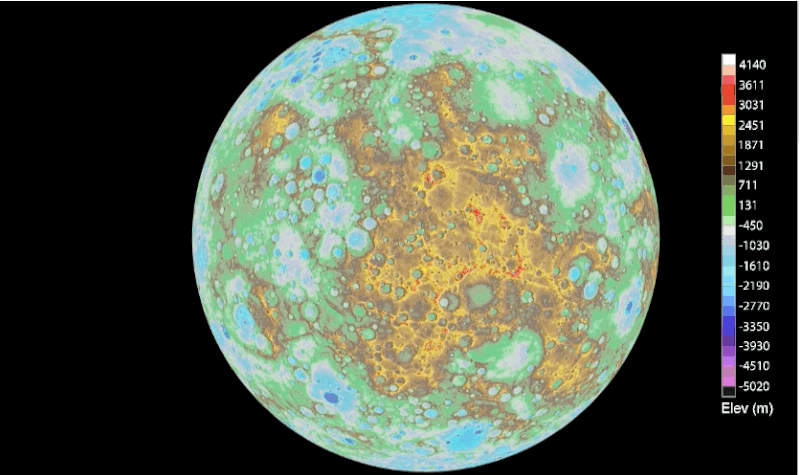
Mapping an Alien World
We have known about Mercury’s existence since at least the time of the Sumerians (3rd millennium BCE). But it wasn’t until nearly the end of the space race (between 1974-75) that we got a hard look as the planet. At this time, 45% of the Mercurian surface was mapped by Mariner 10.
Unfortunately, the world is too close to the Sun to be safely imaged by the Hubble Space Telescope, which is why we sent MESSENGER.
It was launched by NASA 30 years later, and has been in orbit around Mercury for five years. This mission has provided support for the hypothesis that water ice and other volatiles exist in the polar regions in permanent shadow, but now, much more can be uncovered—The U.S. Geological Survey (USGS) just released the first topographical map of Mercury last Friday.
Thanks to NASA’s MESSENGER and a collaboration of Universities who assembled over 100,000 of its images, we now have a detailed map of Mercury’s craters, volcanoes, and landforms.

How We Got Our Look
A new software-based technique was developed by the USGS Astrogeology team to overcome the challenges of matching images taken from different locations with varying angles to the Sun. This effort will help scientists map other planets and moons as well as asteroids and comets.
We have been seeing a lot of topographical maps of other planets, especially Mars, which was recently mapped out by the UK’s Ordnance Survey. Until just recently, we did not have the data to make such detailed map of other planets.
Little was known about Mercury before the launch of MESSENGER. Launched in August 2004, it traveled 4.9 billion miles−15 trips around the sun and flybys of Earth once, Venus twice, and Mercury three times−before it was placed into orbit around Mercury in March 2011.
Although MESSENGER completed its main objectives by March 2012, the mission was extended two times, permitting it to capture additional images and information about the planet in extraordinary detail. Its voyage “surpassed expectations and ended with its descent and impact onto the surface on April 30, 2015,” the USGS said.
Maps like these give us an idea of how it would feel to hike across the planet’s surface. In essence, we are making roadtrip maps for all the places we can imagine our travels will take us in the impending future.